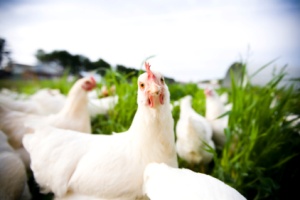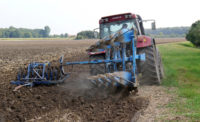 A new study finds that egg production workers are at risk for pulmonary problems due to exposure to airborne particulate matter inside hen houses.
A new study finds that egg production workers are at risk for pulmonary problems due to exposure to airborne particulate matter inside hen houses.
A three-year study by the Coalition for Sustainable Egg Supply assessed worker health and safety, along with animal health and well-being, environmental impact, food affordability and food safety. The study is intended to increase understanding of the sustainability impacts of various laying hen housing, including cage-free aviary, enriched cage and conventional cage systems.
Inflammation, decreased function
The research showed that airborne particulate matter inside hen houses, depending on its size, can make its way into workers’ airways, with smaller particles being deposited deep into the lungs. Endotoxins (bacterial toxins), can promote airway irritation and inflammation, as well as decreased lung function.
To measure the impact of air quality on worker health, a total of 123 worker day data samples, with 41 samples from each of the three housing systems, were collected from workers who were randomly assigned to each house, ensuring equal coverage of each house. Each of those workers wore a personal exposure monitor while in the hen houses, sampling for ammonia, total suspended particles (TSP, also called inhalable) of all sizes and smaller particles up to 2.5 microns in size (PM2.5) through each of three seasons; summer, winter and spring.
Significant differences
Inhalable particle and PM2.5 concentrations, as well as endotoxins (bacterial toxins), were significantly higher in the aviary system when compared to those in the conventional and enriched systems, which were not statistically different from each other. It is believed that these levels were highest in the aviary system due to litter (dust-bathing material and manure) left on the floor.
Across the three seasons tested, spring, summer and winter, the aviary system had higher inhalable concentrations, PM2.5 concentrations, inhalable endotoxins and PM2.5 endotoxins, with one exception. Only during the summer were PM2.5 endotoxins nearly equal across each of the three systems.
The detection of ammonia was also highest in the aviary house during the summer, while winter and spring testing showed no significant differences between the systems. The percentage of time the ammonia was greater than or equal to 25 ppm, the National Institute for Occupational Safety and Health’s (NIOSH) Recommended Exposure Limit, was highest in the enriched and aviary systems. Given the percentage of time exposure occurred at that level, this was a relatively low exposure rate, making any potential health impact insignificant.
Respiratory protection a factor
Lung function and exhaled nitric oxide, both tests of possible airway inflammation were measured, along with self-reported occurrence of respiratory symptoms. Changes in lung function and exhaled nitric oxide were similar in the three systems. Average mask use was higher for those workers in aviary housing, which may have protected them from greater respiratory consequences.
Worker ergonomics were also considered, with tasks classified into three categories indicating their level of ergonomic risk due to body position during the task. Researchers also looked for three main ergonomic stressors, including force, repetition and posture.
Ergonomic risks
In the ergonomic review, a number of tasks stood out as possible risks. Loading and unloading of cages in the conventional and enriched colony systems during population and de-population require extreme body positions, including squatting for an extended time. There was also significant twisting while “herding” the birds and standing on small diameter railings in these two systems.
Gathering eggs that had been laid on the floor in aviary systems was also noted as an issue, as it warranted extreme body positions, including squatting for an extended period of time. Further, extreme arm positions over the shoulder and reaching to the side, as well as rapid and extreme hand and wrist positions were noted. Crawling and lying on the floor to collect floor eggs also exposes the employee to potential respiratory hazards, especially if no respiratory protection is worn, as well as to potential infection hazards to the hands and the knees.
Click here for a complete overview of the preliminary results.



